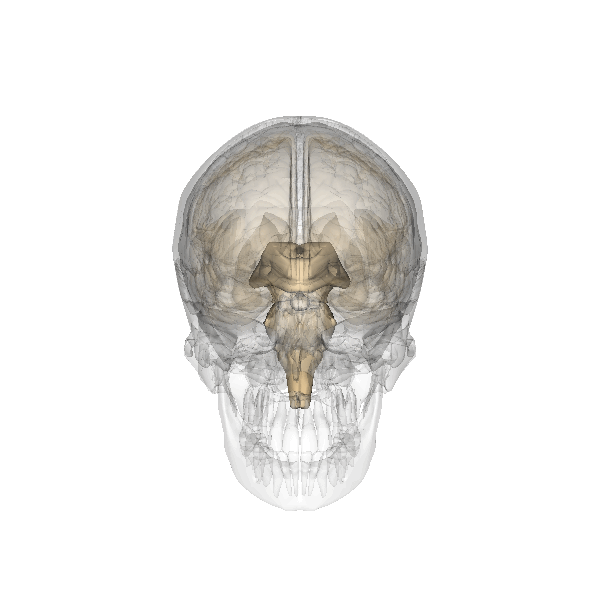At the very center of your brain, chillin' in-between the right and left hemispheres, is a small, (grain-sized (5-8mm)), pine cone-shaped endocrine gland, called the Pineal Gland. Known to produce melatonin, the substance that spikes in production when one enters deep dream-states, this trippy gland is also known as the "third eye;" the "Seat of the Soul," as Descartes (the "Father of Modern Philosophy") called it.
Apparently, this mysterious gland has become increasingly calcified by Fluoride; the wonderful (reduced form) of Fluorine (basic element) that has lovingly been put in our water supplies. Quick History lesson:
At any rate, the Pineal gland is more calcified and Fluoride deposits have been linked to aging. (^ a b Luke, Jennifer. "Fluoride Deposition in the Aged Human Pineal Gland". Caries Res 2991 (35): 125–28. http://www.icnr.com/jluke/fluoridedeposition.html. Retrieved 2009-05-20.) But, this post is hardly meant to be a cynics "conspiracy theory nonsense." I want to talk about this trippy-ass gland and what it might be for.
Read more ...
Apparently, this mysterious gland has become increasingly calcified by Fluoride; the wonderful (reduced form) of Fluorine (basic element) that has lovingly been put in our water supplies. Quick History lesson:
ALCOA, produces fluoride as a byproduct of Aluminum, had George Bush's Sec of Treas. as a Chairman w/ $50million in stock shares in 2001, arranged back in the 1950's to sell their waste on grounds of health benefits for teeth and water sanitation. They really had no motivation to conduct heavy research, as greedy minds blind. Unfortunately for us, the hundreds of millions of tons of Fluoride in our water supply, has been shown in 1998, by the Psych Dept of Binghamton University NY, to create:
"alterations in the nervous system resulting from chronic administration of the fluoroaluminum complex or equivalent levels of fluoride in the form of sodium-fluoride. The rats were given fluoride in drinking water at the same level deemed "optimal" by pro-fluoridation groups, namely 1 part per million (1 ppm). Most pronounced damage was seen in animals that got the fluoride in conjunction with aluminum. The pathological changes found in the brain tissue of the animals were similar to the alterations found in the brains of people with Alzheimer's disease and dementia."
A scientist and researcher Julie Varner said:
"While the present results do not address the causal mechanisms of aluminum-induced neural degeneration, they do demonstrate that ingested aluminum reaches the brain, and in such animals there exists evidence of neural injury." (http://www.fluoride-journal.com/98-31-2/31291-95.htm)
At any rate, the Pineal gland is more calcified and Fluoride deposits have been linked to aging. (^ a b Luke, Jennifer. "Fluoride Deposition in the Aged Human Pineal Gland". Caries Res 2991 (35): 125–28. http://www.icnr.com/jluke/fluoridedeposition.html. Retrieved 2009-05-20.) But, this post is hardly meant to be a cynics "conspiracy theory nonsense." I want to talk about this trippy-ass gland and what it might be for.
From Tool's album Aenima.
Facts:
- The structures of the third eye in the tuatara are homologous to the cornea, lens and retina, though the latter resembles that of an octopus rather than a vertebrate retina. The asymmetrical whole consists of the "eye" to the left and the pineal sac to the right. "In animals that have lost the parietal eye, including mammals, the pineal sac is retained and condensed into the form of the pineal gland."[9 on Wiki]
- Unlike much of the rest of the mammalian brain, the pineal gland is not isolated from the body by the blood-brain barrier system;[10] indeed it has profuse blood flow, second only to the kidney.[6]
- Melatonin is a derivative of tryptophan, an amino acid.
- Related to tryptamines, DMT, hallucinogens.
- Absorbs Fluorescence between 280nm and 380nm, while the human visible spectrum is 380nm-740nm. (Anyone interested in expanding their visual range?=])
- Melatonin has been shown to protect against neurodegeneration
Painting by Alex Gray



